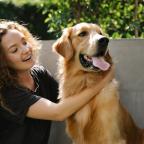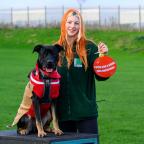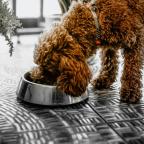
Study Reveals Badly Behaved Dogs Are SMARTER? Dog Expert Weighs In On How To Train Brits Pesky Pooches
We are a nation of dog lovers, and with a staggering 10 million dogs residing in the UK (that’s 34% of households) it’s no wonder we are all barking mad. But a study conducted by Katriina Tiira, from the University of Helsinki, analysed 1,000 dogs and has revealed that the badly behaved dogs are often the smartest. Whilst many dog owners may have their head in their hands, Kennel Store are here to help.
Google Trends shows a 5,000% increase in searches for ‘crate training, puppy training’ and a 450% increase in searches for ‘dog training near me’, showing that dog owners country wide are looking to help their pups to be on their best behaviour.
Dog experts Kennel Store have commented on the study, and advised Brits on how they can help their troublesome pets with crate training.
“Mischievous puppies are a new burst of energy to our household, and they are so much fun. With studies suggesting naughty puppies are more intelligent, it’s important that dog owners feel in control of their pets.
Dogs often misbehave due to a multitude of reasons, but lack of routine and boredom can be just a couple of the reasons for bad behaviour. It’s extremely important to start training dogs as early as possible and introduce a stable routine. Crate training is a great way to create a sense of stability and discipline, to allow your dog structure and prevent events of bad behaviour.
Introducing Your Dog To Crate Training
The first thing you’ll want to do when crate training your dog is the introduction. Start slow and let your dog get comfortable with it first. Your dog needs to think of the crate as a safe and happy place, so first impressions are crucial at this beginning stage.
Feed Your Dog In The Crate
- It’s a good idea to try to associate the experience with something positive – and what’s more positive for a dog than food!
- Start by giving your dog its meal inside their crate. If your dog is still somewhat nervous, you can place its meal towards the entrance of the crate. This positive association will make your dog feel at ease.
- Once your dog has comfortably entered the crate and is eating, close the door until they are finished. The first few times you do this, open the door as soon as they have finished and with each meal leave the crate door closed for a few minutes later. Leave your dog in the crate for about 10 minutes or so after eating.
- You may find that your dog is beginning to whine to be let out. If this is the case, you may have increased the length of time too quickly, so next time, try leaving them in the crate for a shorter period. It’s essential that when they are used to this routine that you don’t let them out when they begin whining.
Extend The Time Your Dog Spends In The Crate
- Once your dog is comfortable in its crate, and there is no sign of fear or anxiety, you can begin to slowly extend how long they stay in there. While you are at home to supervise, start by encouraging your dog to enter the crate, and once they have done this you can praise them, give them a treat and then close the door.
- To ensure crate training success, always leave your dog with a chew toy or something to play with. Once your dog can remain calm and relaxed for 30 minutes or more, it will now be time to try keeping them in the crate overnight and when you leave your house.
Safety Tips For Crate Training Your Dog
- When leaving your dog in its crate, take off all chains and training collars. If left on, this could become very dangerous for your dog. If you must leave a collar on, choose a safer ‘break-away’ type collar.
- Puppies that are six months or younger should not be left in a crate for more than three or four hours at any given time. When pups are this young, they cannot control their bladders and bowels for that period. The same also goes for more mature dogs that are being house trained.
- Never tease your dog in its crate and never let children push their fingers through the panels.
- Avoid leaving your dog in its crate for long periods. Every dog needs to get exercise and human interaction, so if they are not receiving this, they may become depressed or anxious.
- Never ever leave your dog in its crate in a hot room, in direct sunlight both inside and outside, or in a car on a sunny day.”







